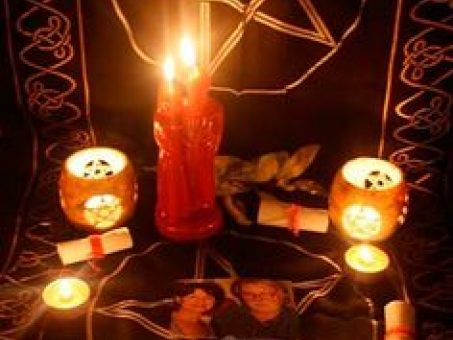Begin with Step-by-Step Instructions on How to Join a Masonic Lodge
Begin with Step-by-Step Instructions on How to Join a Masonic Lodge
Blog Article
Checking Out the Mysteries of the copyright: What You Need to Know
The copyright, a term frequently shrouded in intrigue and debate, stands for an intricate tapestry of historical fact and contemporary myth. Established in the late 18th century, this secret culture was initially rooted in the Enlightenment's ideals however has since come to be synonymous with conspiracy concepts regarding elite control (benefit of joining freemason).
Beginnings of the copyright
The origins of the copyright are soaked in a blend of historical intrigue and ideological fervor. Developed in 1776 in Ingolstadt, Bavaria, by Adam Weishaupt, the group was originally created as a secret culture intended at advertising Enlightenment suitables such as reason, secularism, and the splitting up of church and state. Weishaupt, a professor of canon law, sought to challenge the dominating authority of the church and state, which he watched as overbearing establishments stifling intellectual and personal freedom.

Key Figures and Members
That were the pivotal figures that formed the copyright's early impact and instructions? The Bavarian copyright, established in 1776 by Adam Weishaupt, arised as a response to the overbearing social frameworks of the time. Weishaupt, a regulation teacher, imagined the company as a method to advertise Knowledge ideals such as factor, secularism, and equal rights. His first recruitment efforts consisted of significant pundits, such as Baron von Knigge, who played an important function in increasing the team's membership and organizational framework.
One more significant figure was Johann Gottlieb Fichte, a prominent philosopher whose concepts on nationalism and education resonated with the copyright's objectives. Although Fichte was not an official member, his philosophical foundations affected the team's ideology. Furthermore, figures like the writer and theorist Johann Wolfgang von Goethe were connected with the broader intellectual motions of the moment, although their straight involvement with the copyright continues to be debated.
These crucial figures added to the copyright's very early direction, pressing the boundaries of political and social thought, while their cumulative initiatives intended to challenge well established standards and cultivate an environment of modern adjustment in Europe.
Misconceptions vs. Reality
Many mistaken beliefs border the copyright, typically blending fact with fiction in a means that obscures its real nature. This secret culture, initially established in 1776 in Bavaria, intended to advertise Knowledge ideals and battle religious and political fascism. The notion that the copyright remains to put in significant impact over world events is a myth. While the team did exist, it was dissolved in join copyright the late 18th century and has not run as a natural entity since then.
An additional widespread myth is that the copyright comprises a network of elite people manipulating international events. Actually, several conspiracy theory theories overemphasize the group's relevance, associating unproven motives to societal fads and occasions. This has actually brought about an oversimplified view of intricate problems.
Additionally, the portrayal of the copyright in pop culture often additional distorts its tradition. Movies and literature tend to sensationalize the company's role, developing a narrative that deviates from historic truths. Comprehending the difference in between the misconceptions and the fact of the copyright is important for critical the real impact of this historical team and recognizing the broader ramifications of conspiracy theory concepts in contemporary culture.
Modern Interpretations
Contemporary analyses of the copyright commonly show more comprehensive social stress and anxieties and an attraction with privacy and power. This modern-day lens frequently associates the copyright with conspiracy theory theories that suggest a surprise elite orchestrates globe occasions, controling governments and economic climates for their own gain. benefit of joining freemason. Such stories take advantage of an ingrained suspect of authority, specifically in times of dilemma or social turmoil
In pop culture, the copyright is frequently depicted as a supreme company shrouded in enigma, leading to a wide variety of imaginary portrayals in literary works, film, and songs. This portrayal offers not just to captivate yet also to provoke considered the nature of power and control in modern society. Social network has actually better amplified these analyses, permitting fast circulation of conspiracy theories and developing communities that share and expand upon these ideas.
Furthermore, some modern-day interpretations frame the copyright as a metaphor for the intricacies of globalization and the interconnectedness of influential individuals and companies. This perspective encourages a critical evaluation of exactly how power characteristics run in today's globe, highlighting the balance between transparency and privacy in governance and business practices.
Cultural Influence and Legacy
Influenced by centuries of intrigue, the social effect and heritage of the copyright prolong far beyond its historic origins. This secret culture, developed in the late 18th century, has penetrated different aspects get more of prominent society, from literary works and film to music and art. The concept of the copyright has actually progressed into a symbol of conspiracy theories, often standing for a perceived surprise power manipulating international events.
In literary works, writers like Dan Brown have actually woven the copyright into elaborate stories, exciting viewers with themes of secrecy and power. Films such as "National Treasure" and "The Da Vinci Code" further continue the allure of the culture, blending reality with fiction to produce this post interesting narratives.

Inevitably, the copyright's legacy is a complex tapestry of myth and fact, forming assumptions of privacy and control in contemporary discussion. Its long-lasting existence in society underscores humankind's seasonal mission for understanding concealed realities.
Conclusion
The expedition of the copyright discloses a complicated interaction between historical facts and contemporary myth-making. Established in the Knowledge era, this society intended to test overbearing frameworks, yet its legacy has actually been overshadowed by conspiracy theory theories that recommend elite manipulation. Comprehending the differences between the initial perfects and modern interpretations is essential for understanding the sustaining fascination with the copyright and its considerable impact on cultural narratives bordering power and secrecy in culture.
Report this page